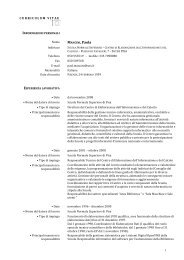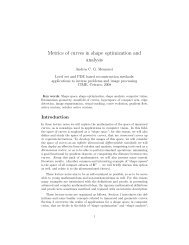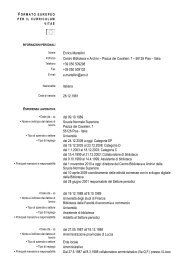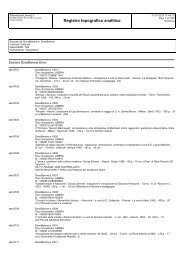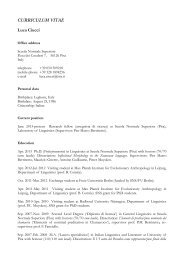Kolmogorov equation associated to the stochastic reflection problem ...
Kolmogorov equation associated to the stochastic reflection problem ...
Kolmogorov equation associated to the stochastic reflection problem ...
You also want an ePaper? Increase the reach of your titles
YUMPU automatically turns print PDFs into web optimized ePapers that Google loves.
which follows taking in<strong>to</strong> account (4.16).<br />
Therefore <strong>the</strong>re exists a sequence {ε k } such that<br />
ϕ εk → ϕ, strongly in L 2 (K, ν)<br />
Dϕ εk → Dϕ, weakly in L 2 (K, ν; H)<br />
∫<br />
∫<br />
lim |Dϕ εk | 2 dν = |Dϕ| 2 dν.<br />
k→∞<br />
K<br />
K<br />
This implies that Dϕ εk → Dϕ strongly in L 2 (K, ν; H).<br />
We finally assume that f ∈ L 2 (H, ν). Since Cb 1(H) is dense in L2 (K, ν),<br />
<strong>the</strong>re exists a sequence {f n } ⊂ Cb 1(H) strongly convergent in L2 (K; ν) <strong>to</strong> f.<br />
Set ϕ n,ε = (λI − N ε ) −1 f n . By (4.12) we have<br />
∫<br />
|Dϕ ε − Dϕ n,ε | 2 dν ε ≤ 2 ∫<br />
|f − f n | 2 dν,<br />
λ<br />
which implies<br />
∫<br />
H<br />
K<br />
|Dϕ ε − Dϕ n,ε | 2 dν ≤ 2 λ<br />
So, again Dϕ εk → Dϕ strongly in L 2 (K, ν; H).<br />
Step 3. We have<br />
∫<br />
K<br />
K<br />
|f − f n | 2 dν.<br />
ϕ ∈ W 1,2<br />
A (K, ν; H) ∩ W 2,2 (K; ν). (4.22)<br />
By estimate (4.13) we have that {ϕ ε } is bounded in W 2,2 (K, ν). Therefore<br />
<strong>the</strong>re is a subsequence, still denoted {ϕ ε } which converges <strong>to</strong> ϕ in W 2,2 (K, ν).<br />
In <strong>the</strong> same way we see that ϕ ∈ W 1,2<br />
A<br />
(K, ν; H).<br />
Step 4. Checking <strong>the</strong> Neumann condition for ϕ.<br />
From (4.14) we get<br />
∫<br />
N ε ϕ ε ψ dν = − 1 ∫<br />
〈Dϕ ε , Dψ〉dν + 1<br />
K 2<br />
µ(K)<br />
K<br />
∫<br />
Σ<br />
ψ〈γ(Dϕ ε ), n(y)〉dµ Σ .<br />
Recalling that N ε ϕ ε = λϕ ε − f −→ λϕ − f = Nϕ in L 2 (K, ν) and that<br />
〈γ(Dϕ ε ), n(y)〉 → 〈γ(Dϕ), n(y)〉 in L 2 (Σ, µ Σ ) by Proposition 2.9, by (i) and<br />
by (3.4) we obtain<br />
∫<br />
〈γ(Dϕ), n(y)〉 ψ dµ Σ = 0, ∀ψ ∈ W 1,2 (K, ν)<br />
Σ<br />
which implies (4.17) as claimed. This completes <strong>the</strong> proof.<br />
23


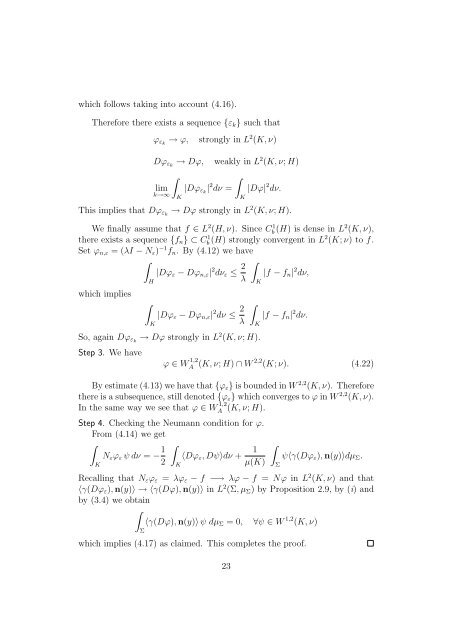

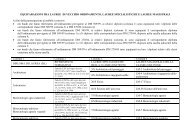
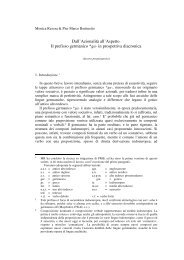
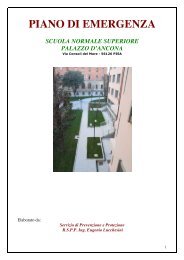
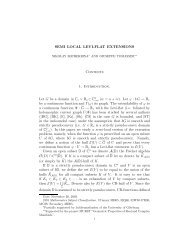
![4. Ghost [Å] vowels in French - Laboratorio di Linguistica](https://img.yumpu.com/49999334/1/184x260/4-ghost-a-vowels-in-french-laboratorio-di-linguistica.jpg?quality=85)



